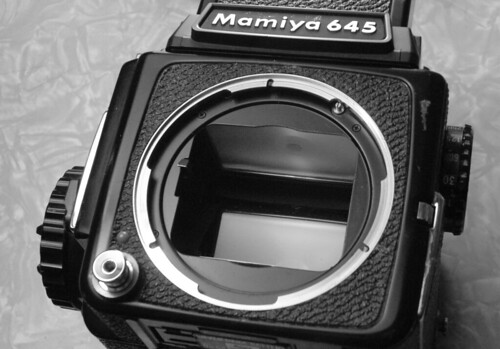Difference between revisions of "Reflex finder"
m |
m (wiki-link to split image device) |
||
| Line 8: | Line 8: | ||
}}A '''reflex finder''' is a [[viewfinder]] system employing a mirror placed behind a lens. The light passing through the lens is '''reflected''' upwards by the mirror, and focused onto a [[ground glass]]. The image formed on this ground glass can be observed directly, in a '''waist level finder'''; or it may be optically redirected (with a set of mirrors or a [[Pentaprism|prism]]) for eye-level viewing, giving an '''eye level finder'''. | }}A '''reflex finder''' is a [[viewfinder]] system employing a mirror placed behind a lens. The light passing through the lens is '''reflected''' upwards by the mirror, and focused onto a [[ground glass]]. The image formed on this ground glass can be observed directly, in a '''waist level finder'''; or it may be optically redirected (with a set of mirrors or a [[Pentaprism|prism]]) for eye-level viewing, giving an '''eye level finder'''. | ||
| − | With a reflex finder, you can focus the image on the ground glass and frame your picture at the same time. It is common to find a device on the center of the ground glass to help precise focusing, for example a split image device or a [[microprism]] | + | With a reflex finder, you can focus the image on the ground glass and frame your picture at the same time. It is common to find a device on the center of the ground glass to help precise focusing, for example a [[split-image device]] or a [[microprism]]. Today's reflex cameras usually incorporate [[autofocus]]; so the reflex image is no longer the primary method of focusing. |
[[Reflex|Reflex cameras]] may be classified as: | [[Reflex|Reflex cameras]] may be classified as: | ||
Latest revision as of 14:49, 2 August 2011

|
| Looking down into a reflex finder, of the Hasselblad 500C/M image by Dries van den Elzen (Image rights) |
A reflex finder is a viewfinder system employing a mirror placed behind a lens. The light passing through the lens is reflected upwards by the mirror, and focused onto a ground glass. The image formed on this ground glass can be observed directly, in a waist level finder; or it may be optically redirected (with a set of mirrors or a prism) for eye-level viewing, giving an eye level finder.
With a reflex finder, you can focus the image on the ground glass and frame your picture at the same time. It is common to find a device on the center of the ground glass to help precise focusing, for example a split-image device or a microprism. Today's reflex cameras usually incorporate autofocus; so the reflex image is no longer the primary method of focusing.
Reflex cameras may be classified as:
- single lens reflex or SLR cameras, using the same lens for viewing and making the exposure
- twin lens reflex or TLR cameras, with one lens for viewing and one lens for taking the picture

|
| Inside the lens throat of an SLR, the reflex mirror and groundglass focus screen are visible image by Voxphoto (Image rights) |